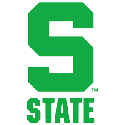How discomfort can help coaches build winning cultures.
Summer is done. It’s back to school and back to work. My hope is that as leaders and coaches go back to work after their summer holidays, they go back with a little anxiety. Not over whether they will have a successful year, by whatever measure is appropriate, but by the mere fact they are doing something different. Something that makes them a bit anxious for trying. Something that’s a little risky. Something that makes them GAG. No, I don’t mean physically. I care too much about my fellow coaches to wish that on anyone. What I mean is to Go Against the Grain!
Sure, you can go back to it and do more of the same. Maybe do it a little harder or smarter this time. Better, more accurate goals and objectives. More efficient drills. Better structure or perhaps a whole new formation. Maybe a new strategy incorporating all the fancy things the world-class teams do. And while you’re at it don’t forget to replace yesterday’s stars (or you thought they were) with the shiny new stars of today (or at least you think they are). Yes, to some extent some of this needs to happen, but you’ve been doing this year after year.
To gain advantage over the guys down the street, you cannot do the same things as they are and expect to achieve more. Chances are, they are also spending a great deal of energy on what I call Mastery. Mastery over skill, structure, tactics, physical capability, speed and efficiency. That’s a good place to compete. After all this is what we can see and measure. So, we spend almost all of our time there. Figure out where the weaknesses are and work like heck to plug the hole, build, motivate, incent, and drive people to do their best. And yet, after we attack these areas for improvement, and perhaps notice progress, somehow the effort seems to swing back to an invisible but familiar equilibrium at the old more accustomed performance or energy level. As a leader, with great intention, you start wondering how to maintain that higher energy level and higher performance.
To achieve and retain a lofty place among your competitors you need to continue all of that Mastery stuff … AND create a GAG environment. A “going against the grain” culture that challenges people to learn and do things that are somewhat uncomfortable. This means if you have your mission pretty much in place (this includes vision, strategy, team goals and objectives) then you’ll need to spend more of your time on involving your teammates. Chances are if you’re perched up on the mission end of the teeter-totter, you have strong compliance and control mechanisms but poor involvement and engagement practices. That may be appropriate, but as we know too much of a good thing can be bad for you. So, the prescription to balancing a strong mission focus is to “go against the grain” and build connectedness, develop new skills and move decision making closer to the action. Yes, this is uncomfortable and should make you gag, but necessary if you want to improve and sustain higher levels of execution.
 While it’s tough to balance competing characteristics such as control and involvement, it is essential for high performance teams and organizations. So, listen intently to individuals and leaders, accept ideas and act on them while challenging the same leaders to commit and go against the grain. Their learning and overall team development depends on this type of interaction.
While it’s tough to balance competing characteristics such as control and involvement, it is essential for high performance teams and organizations. So, listen intently to individuals and leaders, accept ideas and act on them while challenging the same leaders to commit and go against the grain. Their learning and overall team development depends on this type of interaction.
The other competing characteristics that require balance are consistency and adaptability. Human beings and teams do not thrive on chaos. We hate chaos. We long for order, familiarity, agreement and integration. We like stability. And if there was no competition and challenge, then, great! But we test ourselves in daily competitions, face challenges and grow. So, we have to balance consistency, (a mastery trait we spend a great deal of time on), with adaptability. It is important to build systems, practices and processes to be efficient, and maintain stability and order. It’s just as important to introduce appropriate change, influence, new ideas and freedom to act so that decisions can be made by those involved in the action to adapt to unexpected circumstances. Adaptive teams possess a mutual trust and symmetry that permits better anticipation and supportive action then does a team managed by a command and control type of leadership. Teams performing at peak levels know how to balance necessary order with freedom and appear to seamlessly adapt as a group with near flawless execution.
It doesn’t sound all that complicated. But unless you are practicing and balancing these two high performance see-saw cultural traits, there’s a good chance you’re not building team chemistry that drives championship cultures.
So as a coach or leader, GAG to create balance by doing more of these three somewhat uncomfortable things:
1. Be in control AND communicate and connect by sharing more, asking for feedback and including your people, especially your leaders at all levels, in decision-making.
2. Be consistent AND challenge your people through experimentation, learning and adapting new and better ways to do things, with trust and permission to act accordingly.
3. Encourage individuality AND look for opportunities to build strong ties among seemingly uncooperative individuals.
Finally, there’s one thing you should not GAG on, which unfortunately the Penn State University leadership violated. Anchor all your efforts on a set of values you believe in, and stick to them. When thunder strikes in the form of ethical, moral, competitive or personal heartbreak, (and it will) do you turn away from your values or make decisions consistent with them? This is the stuff of leadership and the glue that keeps a winning culture in place. And since your values are the key to long-term success, make sure you are clear about them, talk about them, live them and don’t GAG on them.
Vancho Cirovski, August 28, 2012




